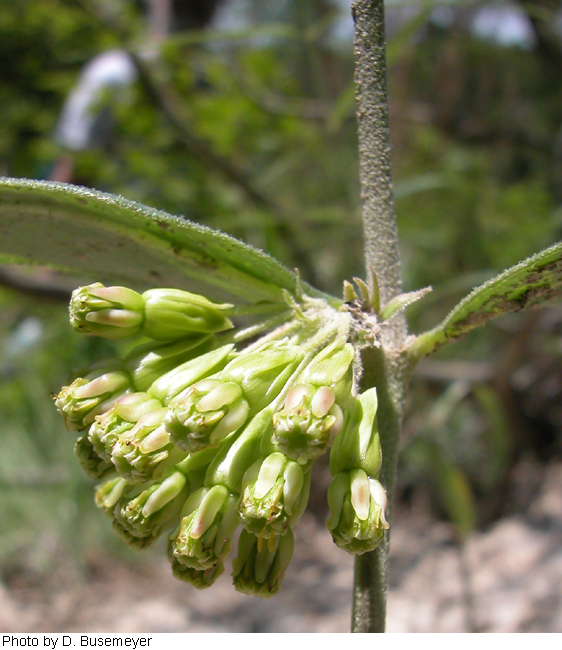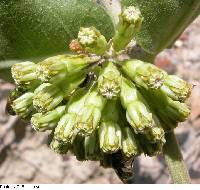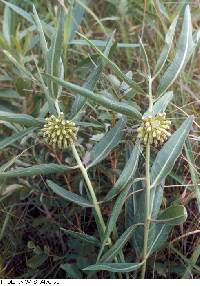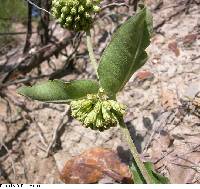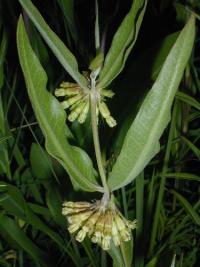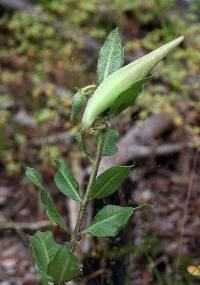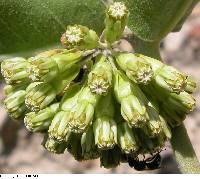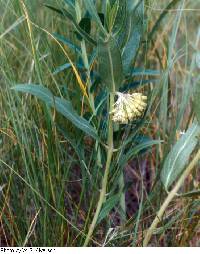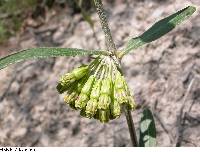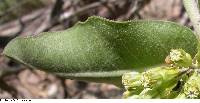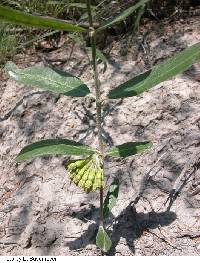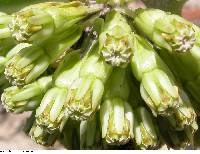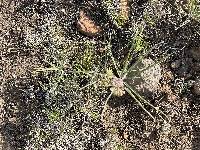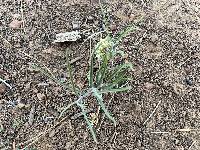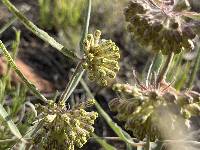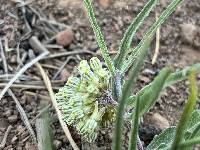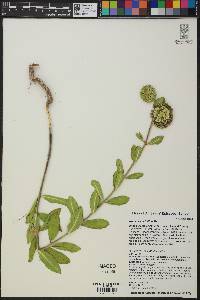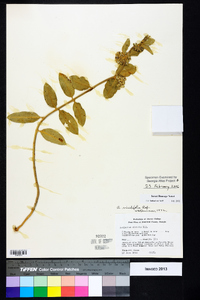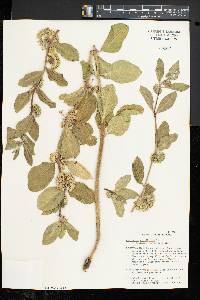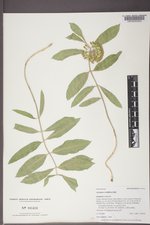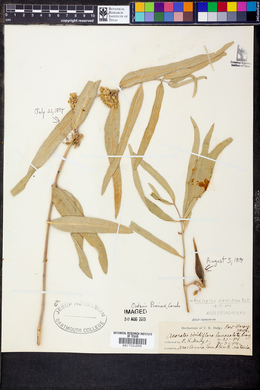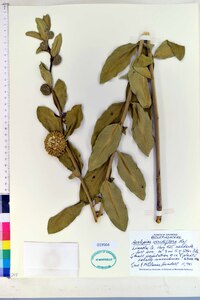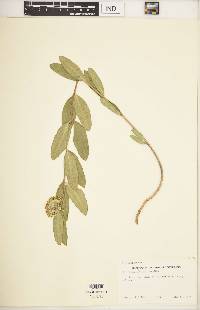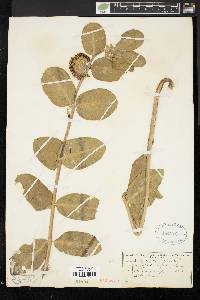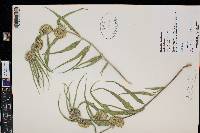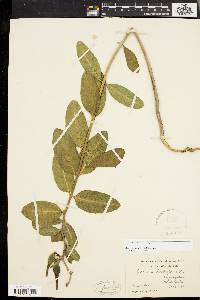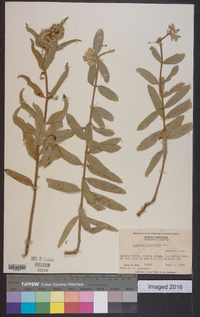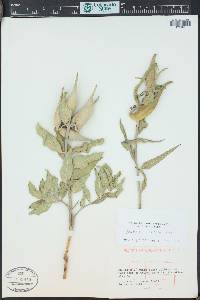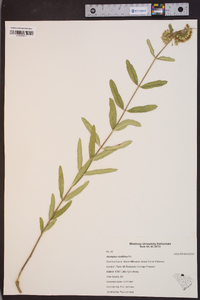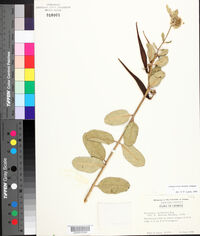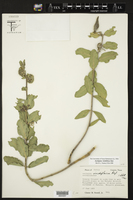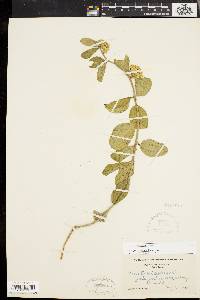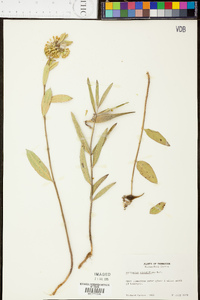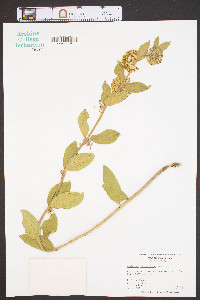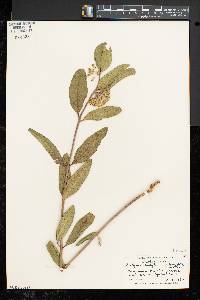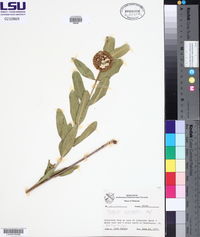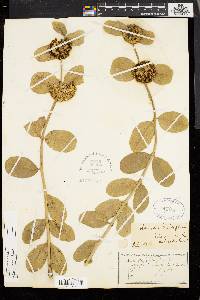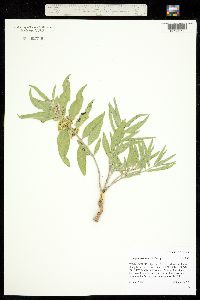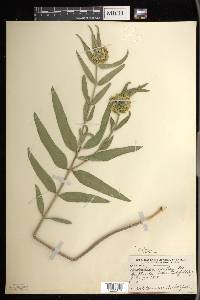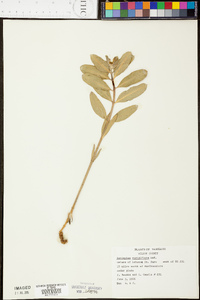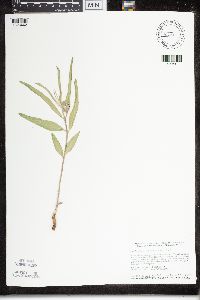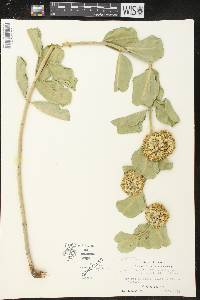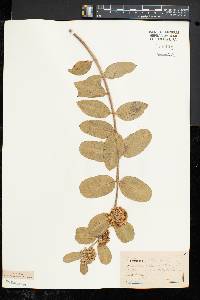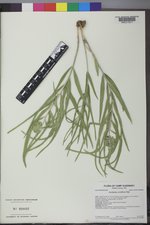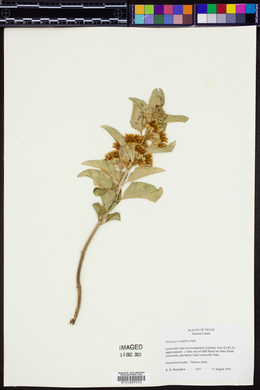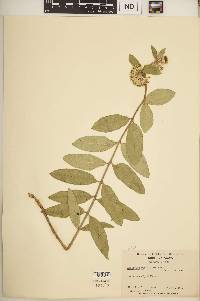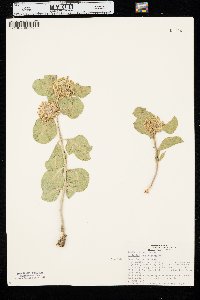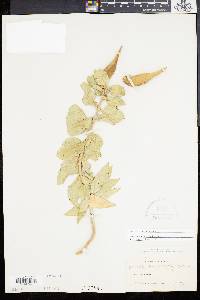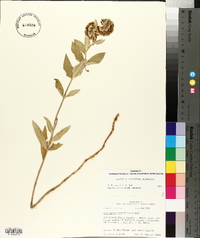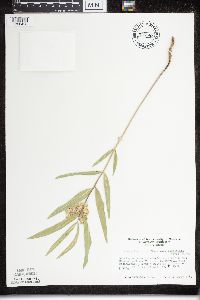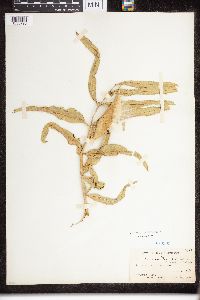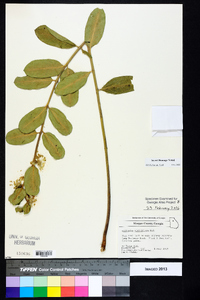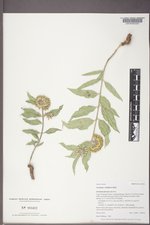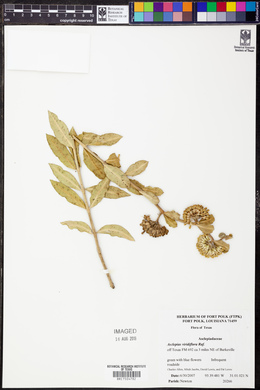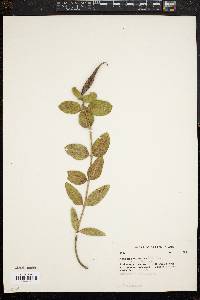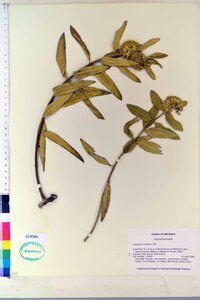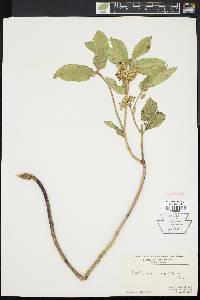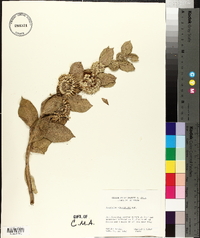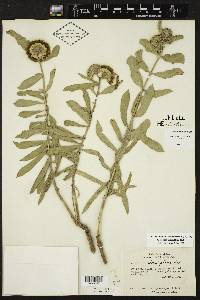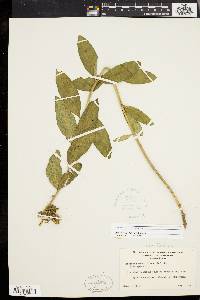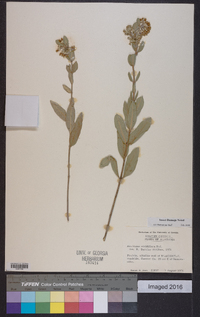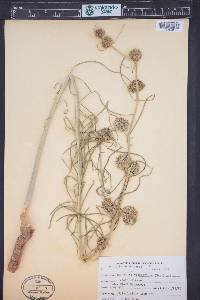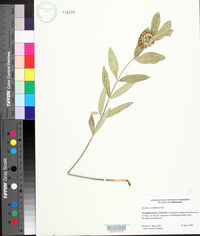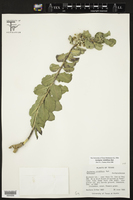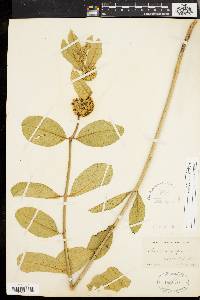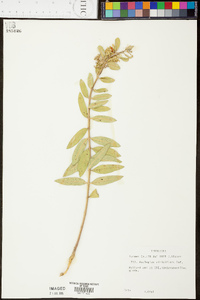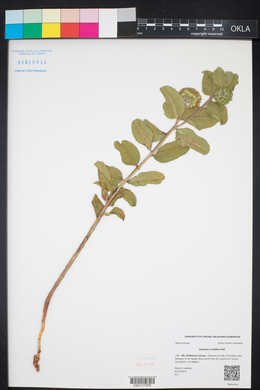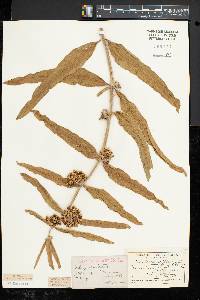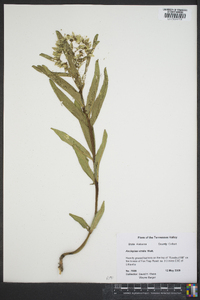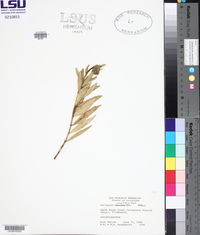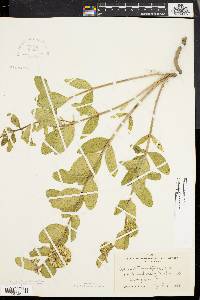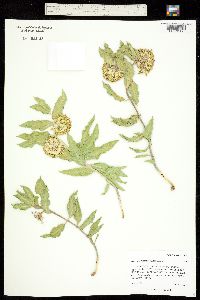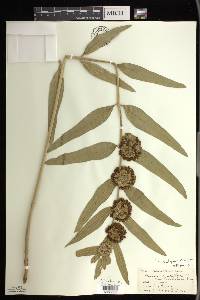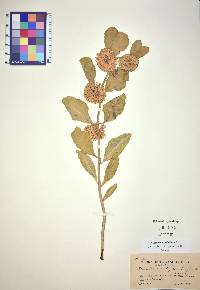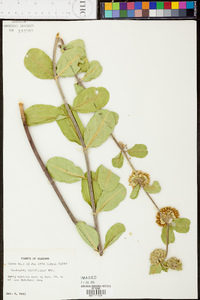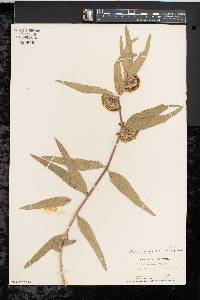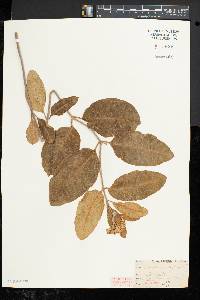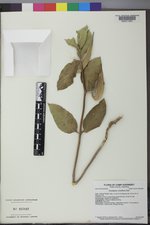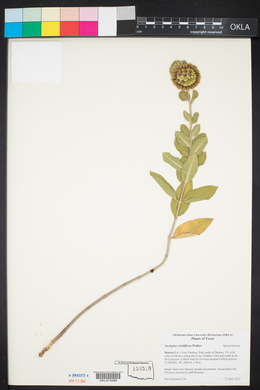Asclepias viridiflora
|
|
|
|
Family: Apocynaceae
Green Comet Milkweed
[Acerates bifida Rusby ex A. Gray, moreAcerates viridiflora (Raf.) Pursh ex Eat., Acerates viridiflora var. ivesii Britt., Acerates viridiflora var. lanceolata A. Gray, Acerates viridiflora var. linearis A. Gray, Asclepias viridiflora var. lanceolata Torr., Asclepias viridiflora var. linearis (A. Gray) Fern., Polyotus heterophyllus Nutt.] |
Plant: perennial herb; stems erect or ascending, typically unbranched, 10-50 cm tall; milky sap Leaves: opposite to irregularly alternate, the petioles 2-7 mm long, the blades narrowly lanceolate to linear, 5-14 cm long, 2-17 mm broad, attenuate to an acute apex, acute to obtuse at the base INFLORESCENCE: UMBELS lateral at 1 to few of the upper nodes, 3-4 cm broad, the peduncles 0.4-1.5 cm long Flowers: small; calyx lobes 3-4 mm long; corolla greenish, the lobes 5-7 mm long; hoods greenish yellow, erect and appressed to the anthers, ellipsoid-oblong, obtuse-rounded at the top, 2.8-3.8 mm long, 1-1.3 mm broad in the middle, ca. 1 mm shorter than the gynostegium, the horns absent; anther wings 2-2.6 mm along their entire length, the upper portion 1.4-1.7 mm long; corpusculum 0.3-0.4 mm long, the pollinia conspicuously long attenuate above, 1.6-2 mm long Fruit: FOLLICLES erect on deflexed pedicels, 7-15 cm long Misc: Open pine forests; apparently rare; 1600-2150 m (5300-7000 ft); May-Aug REFERENCES: Sundell, Eric. 1994. Asclepiadaceae. J. Ariz. - Nev. Acad. Sci. Volume 27, 169-187. Sundell 1993, Woodson 1954, Martin and Hutchins 1980, Nabhan et al 2015 Duration: Perennial Nativity: Native Lifeform: Forb/Herb General: Erect to ascending perennial with stout stems 10-60 cm tall, simple, glabrate to tomentose. Leaves: Opposite to irregularly alternate, on petioles 2-7 mm long, blades lanceolate to oblong-lanceolate or linear, 5-14 cm long, 2-17 mm across, pointed at apex, base obtuse to acute. Flowers: Lateral to axillary umbels ranging from one to many at upper nodes, 3-4 cm across, on peduncles less than 1.5 cm long, the flowers moderately large with reflexed calyx lobes 3-4 mm long, the corolla greenish white, the lobes 5-7 mm long, the hoods 2-4 mm long, yellowish green to purple tinged, narrowly oblong and erect, horns absent. Fruits: Puberulent follicle 5-15 cm long, erect on deflexed pedicel, 1.5-2 cm wide, finely puberulent to glabrate. Ecology: Found in open pine forests, plains and praries, and on hillsides in rocky or sandy soils from 5,000-7,000 ft (1524-2134 m), flowers May-August. Distribution: Ranges across the US from Canada to Mexico, from the east coast to Montana and Arizona and south to Coahuila. Notes: Some indication that this species might prefer limestone soils. Average 78,110 seeds per pound. Ethnobotany: Poultice of chewed roots applied to swellings, rashes, sore eyes, the roots were chewed for sore throats, and were used to spice soups. Etymology: Asclepias is named for the Greek god of healing Asklepios, while viridiflora means with green flowers. Synonyms: Acerates viridiflora, Acerates viridiflora var. ivesii, Acerates viridiflora var. linearis, Asclepias viridiflora var. lanceolata, Asclepias viridiflora var. linearis Editor: SBuckley 2011, 2014 Erect to prostrate, 3-8 dm, thinly hairy; lvs lanceolate to linear or broadly oblong, elliptic, or ovate-oblong, scabrous on the margin, thinly hairy beneath; umbels lateral, densely fld, sessile or on peduncles to 2 cm; cor pale green, its lobes 6-8 mm; hoods narrowly elliptic-oblong, 4-5.5 mm long, appressed to the gynostegium, the base adjacent to the cor, the obtuse or subacute summit reaching well beyond the salient angle of the anther-wings or even to the top of the gynostegium; horns none. Dry upland woods, prairies, and barrens, especially in sandy soil; Conn. and s. N.Y. to Mich. and Man., s. to Ga., Ariz., and n. Mex., commoner westward. July, Aug. (Acerates v.) Gleason, Henry A. & Cronquist, Arthur J. 1991. Manual of vascular plants of northeastern United States and adjacent Canada. lxxv + 910 pp. ©The New York Botanical Garden. All rights reserved. Used by permission. From Flora of Indiana (1940) by Charles C. Deam In sandy soil along roadsides and railroads and in fallow fields. It prefers sandy soil and is apparently a prairie plant but it is sporadic in the southern part of the state. Acerates viridiflora var. lanceolata (Ives) Gray is a variety which has been reported from Indiana but which I am referring to the species, as some authors do, because I am not able to separate the two. I have one specimen with some of the leaves 5 cm wide and one specimen with leaves 8 mm or less in width, and other specimens with leaves that connect these extremes. Since the width of the leaves is the only distinguishing character, it is best to consider the species as one with variable foliage. A very narrowleaf form occurs on the low dunes in west Gary, Lake County. ...... Indiana Coefficient of Conservatism: C = 9 Wetland Indicator Status: UPL Diagnostic Traits: principal leaves opposite, leathery, broadly oblong-elliptic, petiolate; flowers greenish, horns not present; fruits glabrous, smooth, narrowly fusiform; seeds with a tan plume. |
|
|
|

